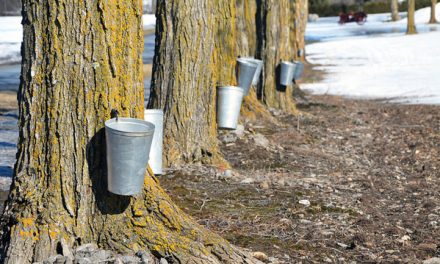By Tom Manley
AgriNews Contributor
The fall season is a popular time to put manure on the fields. Livestock farms use the opportunity to empty their manure storage for the winter season when animals are mostly indoors.
In the case of year-round livestock housing, such as hogs and poultry, then manure application can happen in the fall and the spring.
The question: is manure a waste to be disposed of, or an asset to be managed?
For a livestock operation, then manure can be considered a waste product where handling and disposal need to be very labour and time efficient.
In that case, a liquid manure system is often the preferred choice. It avoids the cost and handling of bedding material. It also lends well to mechanized pumping, storage, transportation, and field application.
But liquid manure presents challenges in terms of nutrient management and environmental impact. Unless it is injected or incorporated promptly, the nitrogen evaporates quickly, with the accompanying unpleasant odour. It is also prone to surface runoff and leaching in rainy conditions. Consequently, the economic value of liquid manure is tough to manage.
For a cropping operation, the manure can be considered a valuable nutrient asset and soil amendment in competition with purchased nutrients. The farm operator adopts practices that retain nutrients as much as possible and that deliver the maximum benefit to the soil and the crop.
An ecological farmer typically prefers solid composted manure as the optimal way to retain nutrients, especially nitrogen, amend the soil with carbon, nitrogen, and a host of other nutrients, activate the soil food web with beneficial microorganisms, reduce the risk of pathogens in the manure, and limit the environmental impact of manure distribution.
Composting is not just for the hobby farmer. Efficient composting methods are available for large livestock operations if they are designed into the farming system. Crop residues, especially straw, need to be collected, stored, and applied as bedding. The manure needs to be contained, turned, aerated, and stored.
Bedding packs are an option to efficiently distribute bedding, absorb liquids, and store solid manure in the same place. An external manure shelter is an option to store, turn, and compost manure while retaining liquids and preventing runoff from rain and snow.
The composting process builds an aerobic bacterial population that digests the manure and binds the nitrogen with the carbon.
The difference is obvious to the neighbours because the compost aggregates retain manure odours. In the field, the solid material retains liquids, prevents surface runoff, and avoids ammonia evaporation.
Besides the retention of nutrients, the ecological farmer appreciates several other benefits of compost.
The compost is a valuable contribution to soil organic matter which builds soil tilth, helps with moisture retention and drainage, ensures aeration in the soil, improves crop development, reduces erosion, and helps prevent soil compaction.
Secondly, the compost comes with an enormous population of beneficial microbial life.
The soil depends on soil life for the decomposition of crop residues and the symbiotic transfer of non-soluble nutrients to the root system.
The combination of nutrients and microbial life in the compost allows the ecological farmer to dispense with the purchased fertilizers.
Thirdly, the high composting temperature neutralizes fecal pathogens, which is especially important for raw crops intended for human consumption. An OMAFRA factsheet shows that fecal pathogens have a relatively short lifespan in a composting situation compared to other manure management systems.
The ecological farmer also appreciates the long life span of the compost. While raw manure, liquid manure, and synthetic fertilizer release nitrogen quickly, the solid compost releases nutrients slowly which supports the crop through its full cycle and even supports crops in the year following the application of the compost.
Finally, the composting process improves the efficiency of the manure. As water evaporates and some carbon is released as CO2, the final volume of the compost is frequently 40-60% of the original volume of the compost feedstock. This translates into less effort in moving and applying the manure and greater nutrient density in the material on the field.
Given the compost’s nutrient density and slow release, an ecological farmer plans a compost application once every three years.
The farmer often plans a 3-year crop rotation: a cereal with a clover cover crop and compost, then corn, and finally soybeans.
References
http://www.omafra.gov.on.ca/english/engineer/facts/05-023.htm
http://www.omafra.gov.on.ca/english/engineer/facts/05-021.htm












